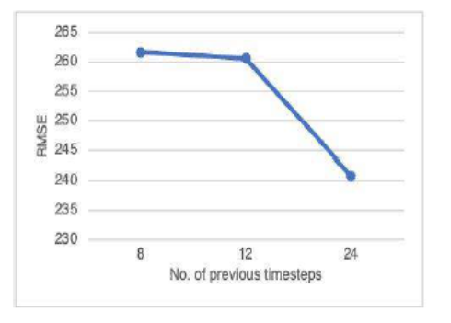


Indian Journal of Science and Technology
DOI: 10.17485/IJST/v17i18.2505
Year: 2024, Volume: 17, Issue: 18, Pages: 1828-1837
Original Article
Chawngthu Zoremsanga1*, Jamal Hussain2
1PhD Scholar, Department of Mathematics and Computer Science, Mizoram University,
Aizawl, Mizoram, India
2Professor, Department of Mathematics and Computer Science, Mizoram University, Aizawl, Mizoram, India
*Corresponding Author
Email: [email protected]
Received Date:03 October 2023, Accepted Date:09 April 2024, Published Date:25 April 2024
Objectives: Predicting the amount of rainfall is difficult due to its complexity and non-linearity. The objective of this study is to predict the average rainfall one month ahead using the all-India monthly average rainfall dataset from 1871 to 2016. Methods: This study proposed a Bidirectional Long Short-Term Memory (LSTM) model to predict the average monthly rainfall in India. The parameters of the models are determined using the grid search method. This study utilized the average monthly rainfall as an input, and the dataset consists of 1752 months of rainfall data prepared from thirty (30) meteorological sub-divisions in India. The model was compiled using the Mean Square Error (MSE) loss function and Adam optimizer. The models' performances were evaluated using statistical metrics such as Mean Absolute Error (MAE) and Root Mean Squared Error (RMSE). Findings: This study discovered that the proposed Bidirectional LSTM model achieved an RMSE of 240.79 and outperformed an existing Recurrent Neural Network (RNN), Vanilla LSTM and Stacked LSTM by 8%, 4% and 2% respectively. The study also finds that increasing the input time step and increasing the number of cells in the hidden layer enhanced the prediction performance of the proposed model, and the Bidirectional LSTM converges at a lower epoch compared to RNN and LSTM models. Novelty: This study applied the Bidirectional LSTM for the first time in predicting all-India monthly average rainfall and provides a new benchmark for this dataset.
Keywords: Deep Learning, LSTM, Rainfall prediction, Stacked LSTM, Bidirectional LSTM
© 2024 Zoremsanga & Hussain. This is an open-access article distributed under the terms of the Creative Commons Attribution License, which permits unrestricted use, distribution, and reproduction in any medium, provided the original author and source are credited. Published By Indian Society for Education and Environment (iSee)
Subscribe now for latest articles and news.